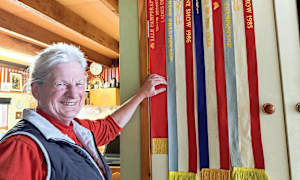WITH the Gippsland region pegged for multi-renewable energy sources and infrastructure there is an opportunity to spearhead a shift to a renewable circular economy.
At last week’s Gippsland New Energy Conference, a panel of experts discussed what a circular economy could look like in the face of renewables, how it could be carried out and the benefits.
Luke Wilkinson, Latrobe Valley Authority Director opened the panel discussion by explaining how a circular economy approach can help realise more value from new clean energy infrastructure, keep resources and materials circulating within the economy for longer, and contribute to even greater emissions reductions in the economy.
“The linear economy is where we take resources, we make it into product or service. We use it and then we dispose. The circular economy is opposite to that in that it’s aiming to make better use of materials, components and products by minimising the amount of resources that we have to take from the natural environment,” explained Luke.
“But we’re aiming to maximise the prevention of waste and optimising the value of those products and services so that we have economic, social, technical, environmental values, maintained and improved through consecutive life cycles.”
A circular economy can generate significant benefits for the offshore wind industry, which is becoming a big focus in other countries, such as northern Europe.
There are opportunities such as further reduction of carbon emissions and opening up new business opportunities that could create over 20,000 extra jobs by 2032.
There are opportunities for offshore wind to expand into new supply chains and markets such as second-hand components and remanufacturing and at the end of use; the circular economy can also reduce the decommissioning risk.
Moreover, reducing resource use, designing components for durability and increasing recycling are critical for sustainable resource supplies that can sustain the industry’s ambitions to grow offshore wind by threefold.
Matt Genever, CEO of Sustainability Victoria, commented that over the last few decades, there has been a heavy focus on embedding the recycling end of the circular economy and it is time to move that focus a bit more upstream.
“Working to ensure that we’re avoiding waste before it starts and starting to look at materials and energy perhaps in a more systemic way and of course helping all Victorians, businesses, communities come along for that journey towards a circular economy.”
Part of this is making sure Australia develops a system that’s able to decommission renewable infrastructure as sustainably and as effectively as possible.
Multiple components and materials are used in new infrastructure and at the end of life a large volume of material is left over that the recycling
sector isn’t necessarily prepared to deal with, creating a complex situation, explained Matt.
“When we start talking about solar panels, the componentry for batteries and even those materials that you might look up there and go well, they’re only tiny and really small in terms of volume, many of those come with significant environmental impacts attached to them. So again, it becomes incumbent upon us to really think about how we’re how we’re managing those risks.”
While there are policies and pillars in place to develop a circular economy around renewables, it is of course complex but Lara Kruk, Jacobs APAC Regional Solutions Director, Energy & Power said there are numerous innovative solutions.
“There are a range of commercially available products that can provide sustainable alternatives to steel, concrete and copper products that are commonly adopted and deployed (for renewables).”
“There’s going to be continued innovation and solutions and different methods that can be used on new energy infrastructure projects that can help us to ensure that we’re minimising the emissions and also the operating emissions of the new energy infrastructure that we’re making and this will ensure that the renewable energy is clean energy,” explained Lara.









